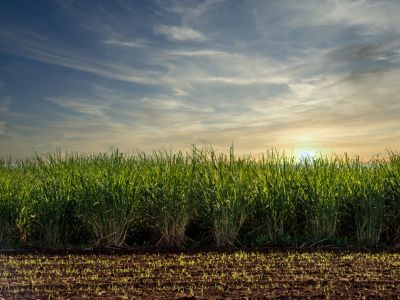Sugarcane Plant Info
A tropical grass native to Asia, sugarcane plants have been grown for over 4,000 years. Their first use was as a “chewing cane” in Melanesia, probably in New Guinea, from the indigenous strain Saccharum robustum. Sugarcane was then introduced into Indonesia and the farther reaches of the Pacific via the early Pacific islanders. During the sixteenth century Christopher Columbus brought sugarcane plants to the West Indies and eventually the indigenous strain evolved into Saccharum officinarum and other varieties of sugarcane. Today, four species of sugarcane are interbred to create the giant canes grown for commercial manufacturing and account for about 75 percent of the world’s sugar. Growing sugarcane plants was at one time a huge cash crop for areas of the Pacific but is now more often grown for bio-fuel in the American and Asian tropics. Growing sugarcanes in Brazil, the highest producer of sugarcane, is quite lucrative as a high proportion of fuel for cars and trucks there is ethanol processed from sugarcane plants. Unfortunately, growing sugarcanes has caused significant environmental damage to areas of grasslands and forests as sugarcane plant fields replace natural habitats. Growing sugarcanes encompasses about 200 countries which produce 1,324.6 million tons of refined sugar, six times that of sugar beet production. Growing sugarcanes is not solely produced for sugar and bio-fuel, however. Sugarcane plants are also grown for molasses, rum, soda, and cachaca, Brazilian’s national spirit. The remnants of sugarcane post pressing are called bagasse and are useful as a source of burnable fuel for heat and electricity.
How to Grow Sugarcanes
To grow sugarcanes one must reside in a tropical climate such as Hawaii, Florida, and Louisiana. Sugarcane is grown in limited quantities in Texas and a few other Gulf Coast states as well. As sugarcanes are all hybrids, sugarcane planting is done using stalks garnered from a favorable species mother plant. These in turn sprout, creating clones which are genetically identical to the mother plant. Since the sugarcane plants are multi-species, using seeds for propagation would result in plants that differ from the mother plant, hence, vegetative propagation is utilized. Although interest in developing machinery to reduce labor costs has taken hold, generally speaking, hand planting takes place from late August to January.
Sugarcane Care
Sugarcane plant fields are replanted every two to four years. After the first year’s harvest, the second round of stalks, called a ratoon, begins to grow from the old. After each harvest of the sugarcane, the field is burned off until such time as production levels decline. At that time, the field will be plowed under and the ground prepared for a new crop of sugarcane plants. Sugarcane care is accomplished with cultivation and herbicides to control weeds in the plantation. Supplemental fertilization is often needed for optimal growth of the sugarcane plants. Water may occasionally be pumped from the field after heavy rains, and in turn, may be pumped back in during drier seasons.
